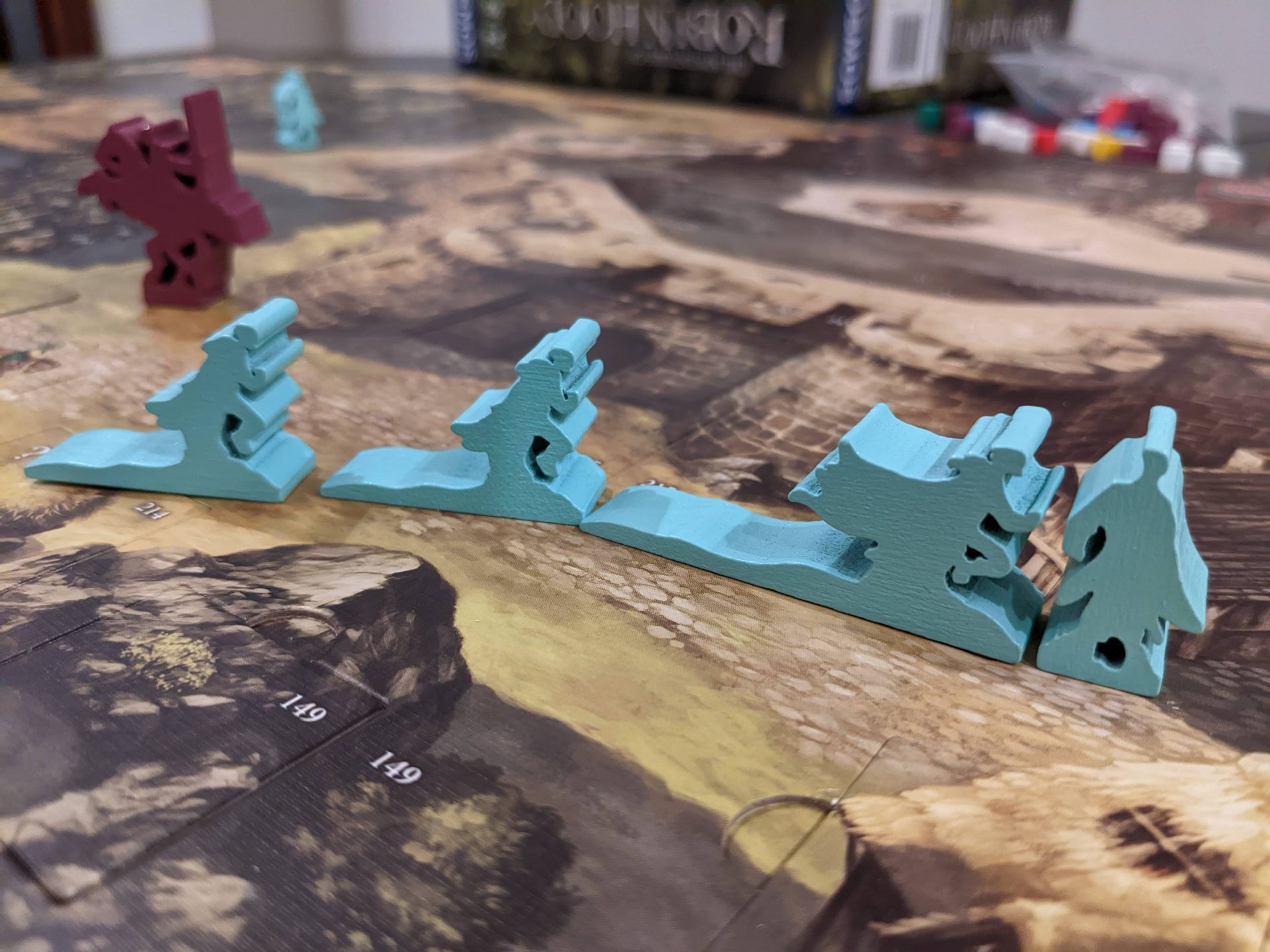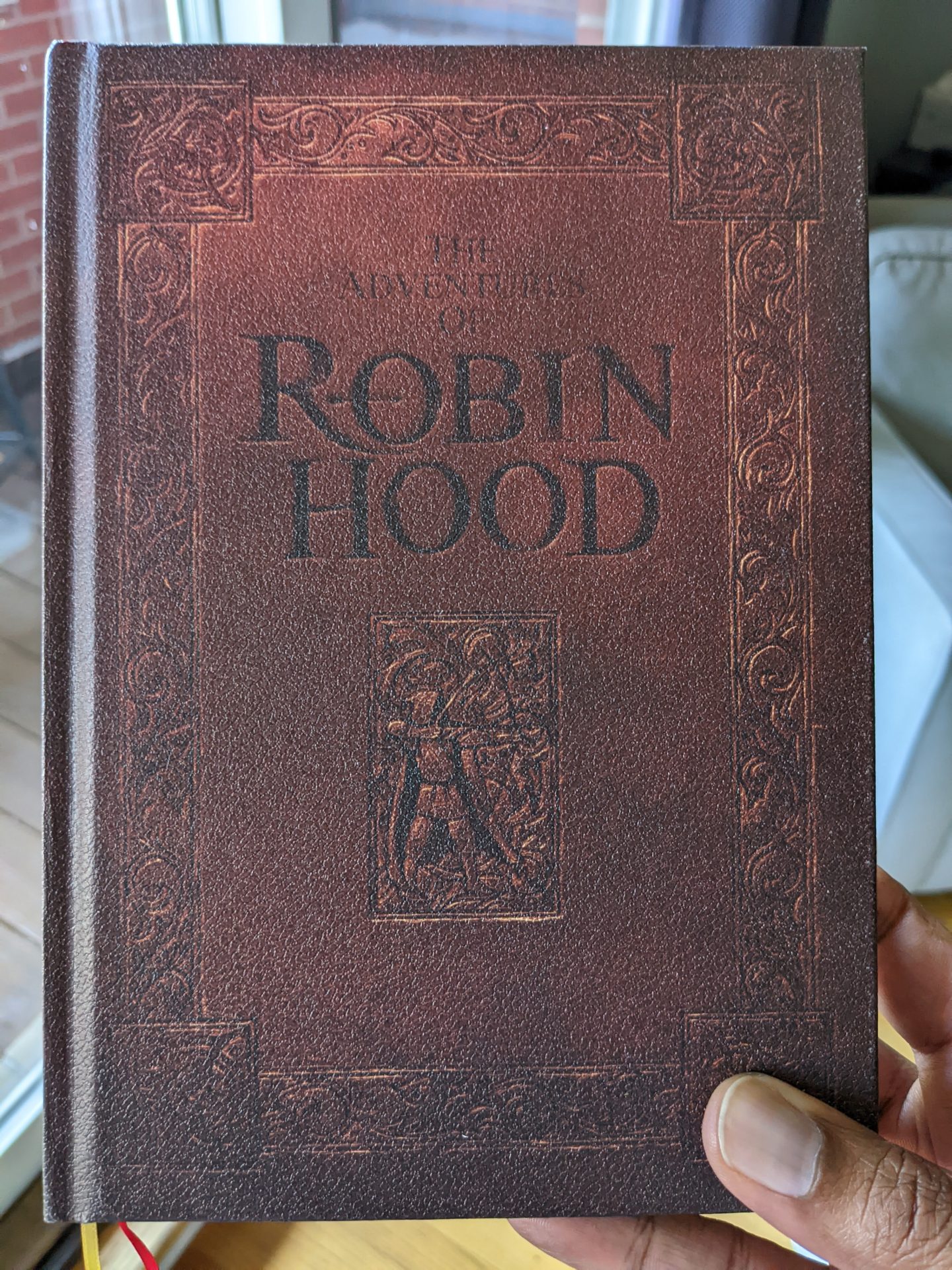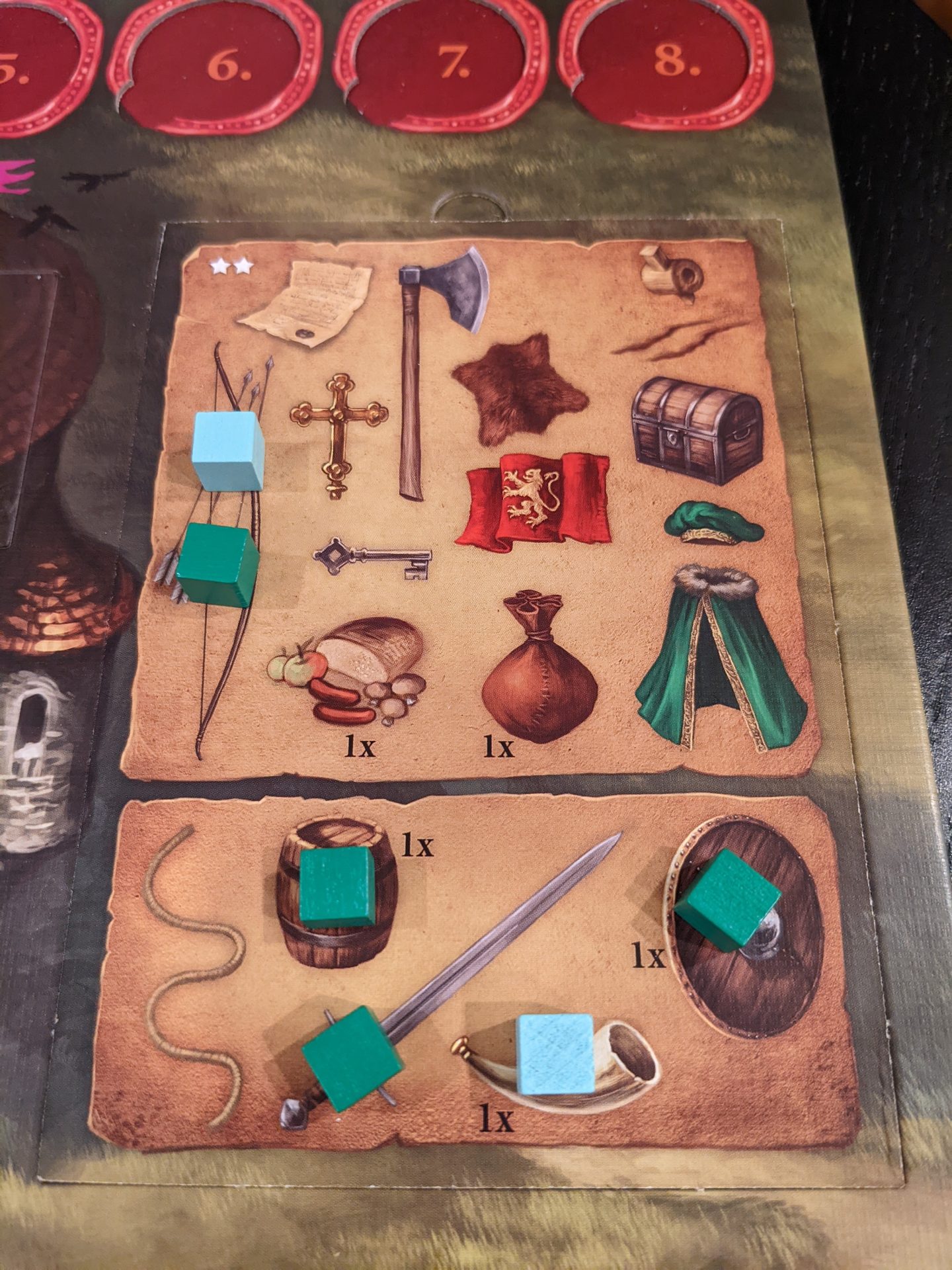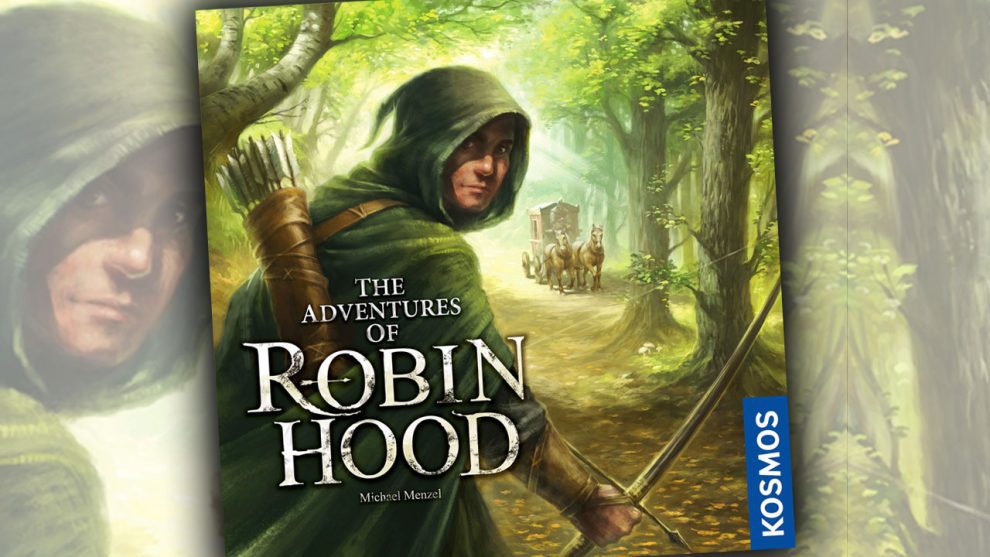Disclosure: Meeple Mountain received a free copy of this product in exchange for an honest, unbiased review. This review is not intended to be an endorsement.
Lots of wooden pieces. A heavy, eight-tile game board. An instruction sheet that basically tells you how to move around the space-less board, but nothing else. A very large, high-quality hardcover book.
The Adventures of Robin Hood (2021, KOSMOS, designed by Michael Menzel) has some pretty mysterious content in the box. Right out of the gate, the game begins, and in classic Choose Your Own Adventure style, the game slowly builds to a crescendo unlike anything I’ve had the chance to play in the last couple of years.
A co-op narrative-driven adventure game with a slick movement system and a board that has some very cool surprises up its sleeve, I will admit to being surprised. Usually, the hype train is one I am hesitant to board.
The Adventures of Robin Hood changes all of that. The game deserves every award it won or went up for when it was released last year. It is a feel-good title which does a ton with very little. In short, The Adventures of Robin Hood is excellent.

Familiar Faces
The Adventures of Robin Hood tells a familiar story—between the movies, the books, the toys, the lore, you probably can recite all of the familiar names: The Sheriff of Nottingham, Maid Marion, Little John. Robin Hood is the lead character and, of course, he is represented by the green wooden tokens.
No surprises so far. In fact, I think the familiarity with these characters hurts this game a bit, because it made some gamers in my circles raise their noses at the idea of playing “a Robin Hood game”, without the slightest idea of what that even means.
Thankfully, The Adventures of Robin Hood takes that familiarity and levels up a few notches.
Players work together to navigate a large map of 8 massive tiles, massive because there are so many secrets buried within. You see, working through this adventure means flipping over various small tiles on the board. These tiles uncover guards standing in Sherwood Forest, or merchants sitting near a wagon waiting to be discovered, or scenery that might become [surprises deleted].
Everything in the game is dictated by moving wooden standees of the lead characters. There are no spaces on the map; instead, the game brilliantly uses a simple walking system dictated by placing wooden tokens in a line from where a character starts a turn to where it ends.

When you end your movement, either examine a tile with a question mark, pass an item to another friendly character, or “defeat” a bad guy by drawing cubes from a bag. Draw a white cube, and you defeat whoever you are attacking. If you don’t draw a white cube after 3 tries, all good; your turn is over, with no penalty.
So, with a combat system this friendly—even calling it a combat system is silly, since this is PG material all the way—where does the tension come in?
The game is constantly counting down to zero. The people of Nottingham need your help, so in each round, the game builds in a timer that will eventually count down the “Hope” track. Lose all hope, and the game ends in a loss for all players. You can build hope by defeating cards, robbing noblemen (you KNEW you had to rob from the rich to give to the poor eventually, right?), and doing other actions that surface during play.
Examining tiles reveals story text right out of a book. Yes, an actual 200-page book, with fantastic writing and new rules which change some of the game’s mechanics every chapter. (There are 7 chapters in the game, which branch after chapter 4 to shake up what happens based on choices made during gameplay.)
Winning each round isn’t easy either. The game always provides an opening tip—visit this character, grab gold from a location, free an outlaw—then you’ve got to use logic to figure out how to solve problems. Later, Guy of Gisbourne shows up, playing the role of bloodhound as he tries to make life more difficult for the good guys.
The board is continuously evolving. That’s what makes The Adventures of Robin Hood really shine. It also leads to the only real nitpick I had with the game.

Flip Guard Tile #5, Please (Again)
Like all legacy experiences—although to the credit of KOSMOS, The Adventures of Robin Hood is fully resettable so you are not ripping up cards nor destroying parts of the board—there is a lot of maintenance to take care of.
Many of the tiles have to be turned over and reset before each play. Certain actions require guards to reveal themselves then go back into hiding. You sometimes have to remember to place wooden hourglass pieces on tiles that need to wait before being reintroduced into the game. There’s a lot of reading, lots of going back and forth between pages, and the occasional edge case.
This is much, much less of a lift than, say, Rise of Fenris (which uses the Scythe base game), or Clank! Acquisitions Incorporated. I played through both of those games and by the end of CAI, I was exhausted from reading so much flavor text.
The Adventures of Robin Hood does amazing work with shorter paragraphs and bold text to call out clues to your next objective, while still integrating plenty of atmosphere into the proceedings.
Still, players should embrace that “playing” this game often means…well, just sitting and listening. Combat is usually stress-free. Some turns are not interesting; hey friend, can you burn your turn to just walk farther into Sherwood Forest? Thanks.
But, over a 45-to-60-minute playthrough, the good greatly outweighs the bad.

Absolutely Worth It
My wife and I have played 5 of the 7 chapters and we are loving The Adventures of Robin Hood. I am told the game scales well to its full player count of 4 players, but we’ve really enjoyed having fewer players so that we can reduce the downtime. I imagine this would be excellent as a game for a family of 4 so I’m hoping to finish our first run of the campaign soon, wait for a couple of years so that my son will be old enough to read some of these passages himself, then run through the whole thing again.
The board, the hardcover book, the movement system, the various gameplay elements that are being added each and every round…wow, it almost all works.
I’m a little worried about how often we have to flip guard tiles over, because the wear and tear on those spots of the board are starting to show even after my first shot at the campaign. And at least one of our losses (the game makes it easy to play any of the missions a second time with slightly easier rules) felt pretty arbitrary. If you don’t draw the right discs/cubes at the right time, you can lose quickly.
But those issues proved minor in the final analysis. The Adventures of Robin Hood is a solid production. Buy this game!












This is one of those games that I keep looking at, wanting to buy it, and somehow never do.
I will have to give this one another look.